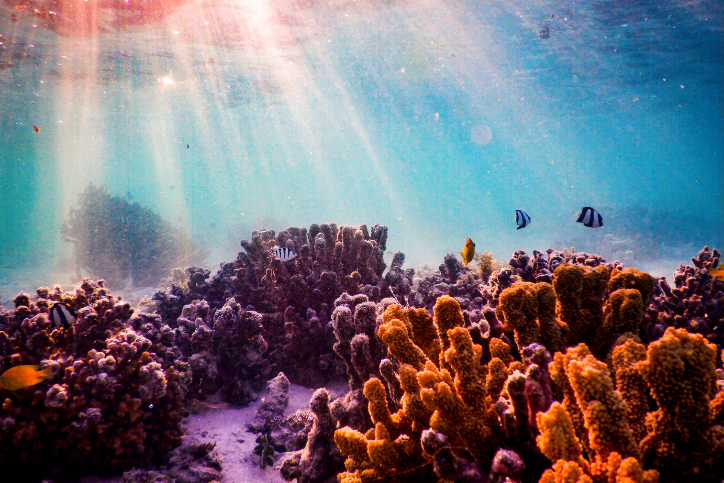Corals look like beautiful underwater flowers.
But they are actually colony-forming cnidarians. They occur especially in the tropical belt. Corals live in symbiosis with algae in order to be supplied by them with nutrients for their growth.
There are stony and soft corals. The different species of stony corals form beautiful coral reefs with their limestone deposits.
In addition to rainforests, coral reefs are among the most species-rich habitats in the world. They make up less than 1% of the area of all oceans, but are home to a quarter of all marine life. The size of all reefs is estimated at about 600,000 km2. They have been around for over 225 million years, therefore they are among the oldest ecosystems in the world.
Unfortunately, they are very sensitive to climatic influences, such as temperature changes. At above-average water temperatures – caused by global warming – corals repel the vital algae, leaving them starving to death or at the mercy of harmful diseases. As a result, they lose their color and that is called coral bleaching.
Already in 2018, the Intergovernmental Panel on Climate Change warned that with a global warming of 1.5 degrees, 70-90% of all coral reefs would die. About half of all shallow water corals on the Great Barrier Reef in Australia are already considered extinct. According to scientific estimates, almost all remaining coral reefs could be destroyed by 2050.
However, there are other stress factors for corals, such as the acidification of the oceans or pollutants in the water.
Another threat to corals is overfishing. As a result, crown of thorns starfish spread very quickly worldwide, as their natural predators are overfished. One crown of thorns starfish eats a fist-sized coral every day.
If the corals die, the rest of the life on the reef also dies, as e.B fish need corals as protection against predators. This would have fatal consequences for many countries. Coral reefs provide food, livelihood, and coastal protection to one billion people worldwide.
But there is also something happening to protect coral reefs, for example in the Reef Village project, which has set itself the goal of rebuilding coral reefs. With your help we want to support this project! You can read more about this in one of the next blog posts.
Reforestation helps saving coral reefs too: dead corals are replaced by more resistant corals or equipped with microorganisms that give them more stress tolerance.
The problem is that corals grow very slowly, so a recovery of stocks is a lengthy process that does not happen overnight. Some corals recover within 10-15 years, some take several decades.
Another way to protect coral reefs would be to have more marine protected areas. Currently, only 7% percent of the sea areas are formally protected.
There is still a lot to do to protect the coral reefs and thus our oceans!

